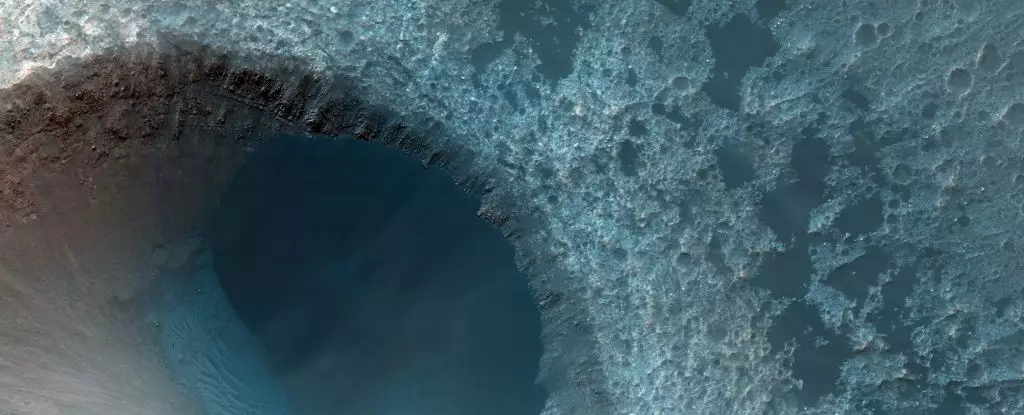Mars, the red planet, has always held an air of fascination for humans. Its rocky landscape and potential for alien life make it a prime target for exploration. While humans have yet to set foot on Mars, Mars has come to us in the form of Martian rocks that have made their way to Earth. However, what scientists have discovered is that these rocks seem to be much younger than expected, challenging previous beliefs about the age of the Martian surface. In this article, we will explore this peculiar finding and delve into the implications it holds for Mars and our understanding of its geological processes.
Rocks from Space
Chunks of Martian rock have been found on Earth, ejected from Mars through violent impacts and cosmic processes. These rocks offer a glimpse into the composition and history of the red planet. Surprisingly, most of the collected samples appear to be relatively young, despite the Martian surface being predominantly old. This discrepancy in age measurements has led scientists to question the accuracy of their estimations. However, a team of researchers from the United States and the United Kingdom has recently made a breakthrough in resolving this issue. Their findings shed light on the age of these rocks and provide valuable insights into the journey they took from Mars to Earth.
Volcanologist Ben Cohen from the University of Glasgow led the research that aimed to determine the age of Martian rocks. The team discovered that many of these rocks are, indeed, quite young, ranging from a few hundred million years old. This revelation offers answers to questions about the duration of the meteorites’ journey from Mars to Earth and suggests insights into the geological processes occurring on the red planet. Cohen explains that identifying the source crater of these meteorites is crucial, and one of the best indicators is the age of the rock samples.
There are approximately 360 meteorite samples on Earth that have been confirmed to originate from Mars. Out of these, around 302 are classified as shergottite, a type of metal-rich Martian rock formed through volcanic activity. Based on the heavily cratered surface of Mars, scientists initially estimated the planet’s surface to be ancient. If the surface were young, volcanic activity would have erased many of the craters caused by impacts. Therefore, rocks ejected from Mars should also be old. However, dating techniques applied to shergottite on Earth have yielded perplexingly young ages, usually less than 200 million years old. This paradox has puzzled scientists for decades, leaving them with inconclusive explanations.
Decoding the Age Mystery
To determine the age of shergottite, scientists employ a dating method called argon-argon dating, which relies on the decay of radioactive potassium into argon gas. By analyzing the ratio of argon isotopes, researchers can calculate the duration of radioactive decay and date the rock sample. However, this technique becomes more complicated when applied to shergottite, as it originates from another planet and has been exposed to various potential sources of argon contamination. To overcome this challenge, Cohen and his colleagues developed a novel method to correct for argon contamination from Earth and space. This correction led to the discovery that the ages of shergottite rocks were much younger than previously thought, aligning with other dating methods such as Uranium-Lead.
The findings revealed that the bombardment of Mars has likely shattered and fragmented its older surface, revealing the younger rock beneath. This process has been supplemented by ongoing volcanic activity that constantly replenishes the exposed surface with new rock. Consequently, it becomes more likely for younger rocks to be excavated and ejected from Mars. The red planet experiences approximately 200 impacts each year, resulting in craters larger than four meters in diameter. With these frequent impacts and constant volcanic activity, it is not surprising that occasional flinging of younger Martian rocks towards Earth occurs.
The discovery of younger Martian rocks on Earth has challenged our understanding of the red planet’s geological history. By unveiling the youthfulness of these rocks, scientists have gained valuable insights into the journey from Mars to Earth and the current state of geological processes on Mars. This newfound knowledge opens up exciting possibilities for future exploration and further unraveling the mysteries of our neighboring planet. With ongoing advancements in space exploration, the enigma of Mars continues to captivate scientists and inspire us to delve deeper into the unknown.


Leave a Reply